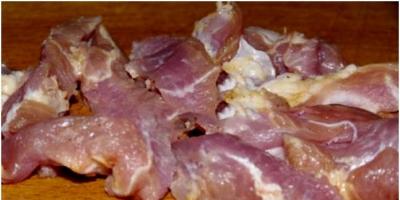Try cutting out a craft like this. Your loved ones will certainly like it by placing it in a visible place, for example, on a shelf. To make this craft you will need the following:
Sawing tools.
Preparing your desktop
First of all, you need to prepare your table on which you will work. There should be no unnecessary things on it and every tool should be at hand. Not everyone has their own desktop and has probably already thought about creating one. Making a table is not difficult, but choosing a place for it in the house is difficult. Perfect option- this is an insulated balcony on which you can do crafts at any time. I have already written about preparing the table in a separate article and tried to describe in as much detail as possible the entire process of creating it. If you don't know how to prepare your workplace, then read the following Article. After you have completed the process of creating a table, try to start choosing your future craft.
We choose quality material
The main material is plywood. The choice is always difficult. Each of us has probably encountered such a problem as delamination of plywood from the end part and asked the question, what causes this delamination? Well, of course, this is mainly due to low-quality plywood. If this is not the first time you have picked up a jigsaw, then you can select plywood from the remnants of a previous craft. If you are new to sawing and you don’t have plywood, then buy it at a hardware store. Choosing material for sawing is always difficult. You should always choose plywood carefully, often look at the defects of the wood (knots, cracks) and draw conclusions. The difficulty in choosing plywood lies in the fact that no matter how you guess at its defects and shelf life. For example, you bought plywood, cleaned it, translated the drawing and suddenly it began to delaminate. Of course, this has happened to almost everyone and it’s oh, how unpleasant. So it is better to pay attention when choosing and choose good plywood. I wrote a special Article in which all the principles of choosing plywood are described step by step.
Stripping plywood
We clean our plywood with sandpaper. As you already know, “Medium-grained” and “Fine-grained” sandpaper is used for cleaning plywood when sawing. IN construction stores You've probably seen sandpaper (or sandpaper), and that's what we'll need. In your work you will need “Coarse-grained”, “Medium-grained” and “Fine-grained” sandpaper. Each of them has its own property, but a completely different coating, by which it is classified. “Coarse-grained” sandpaper is used for processing rough plywood, i.e. which has many defects, chips, and cracks.
“Medium-grained” sandpaper is used for processing plywood after “Coarse” sandpaper and has a slight coating. “Fine-grained” or otherwise “Nulevka”. This sandpaper serves as the final process for stripping plywood. It gives the plywood smoothness, and therefore the plywood will be pleasant to the touch. Sand the prepared plywood in stages, starting with medium-grain sandpaper and ending with fine sandpaper. Sanding should be done along the layers, not across. A well-polished surface should be flat, completely smooth, glossy in the light and silky to the touch. How best to prepare plywood for sawing and what kind sandpaper It's better to choose Read here. After stripping, check the plywood for burrs and small irregularities. If there are no visible defects, then you can proceed to the process of translating the drawing.
Translation of the drawing
For me, drawing translation has always been the main process in my work. I will tell you a couple of rules, as well as tips for high-quality translation of a drawing. Many people transfer the drawing onto plywood not only using a pencil and copying, but also using “Black Tape”, glue the drawing to the plywood, then wash off the drawing with water and the markings of the drawing remain on the plywood. In general, there are many ways, but I will tell you about the most common method. To transfer the drawing onto prepared plywood, you must use a copy, a ruler, a sharp pencil and a non-writing pen. Fasten the drawing in plywood using buttons or simply hold it with your left hand. Check if the drawing fits the dimensions. Arrange the clock drawing so that you can use a sheet of plywood as economically as possible. Translate the drawing using a non-writing pen and ruler. There is no need to rush, because your future craft depends on the drawing.
Drilling holes in the parts
As you have already noticed, the parts contain parts of the grooves that need to be cut out from the inside. To cut out such parts, you need to drill holes in them with help hand drill or, the old fashioned way, make holes with an awl. By the way, the diameter of the hole must be at least 1 mm, otherwise you can damage the elements of the drawing, which, alas, are sometimes difficult to restore. To avoid damaging your work table when drilling holes, you must place a board under the workpiece so as not to damage the work table. It is always difficult to drill holes alone, so ask a friend to help you in your task.
Sawing parts
There are many rules for cutting, but you need to stick to the most common ones. First of all, you need to cut out the internal parts, only then according to the external pattern. There is no need to rush when cutting. The main thing is to always keep the jigsaw straight at a 90-degree angle when cutting. Cut out the parts along the lines you precisely marked. The movements of the jigsaw should always be smooth up and down. Also, do not forget to monitor your posture. Try to avoid bevels and unevenness. If you go off the line while cutting, don't worry. Such bevels and irregularities can be removed using flat files or “coarse-grained” sandpaper.
Rest
When sawing, we often get tired. Fingers and eyes, which are always tense, often get tired. When working, of course, everyone gets tired. In order to reduce the load, you need to do a couple of exercises. You can view the exercises here. Do the exercises several times during work.
Cleaning Parts
You should always clean the parts of a future craft carefully. At the very beginning of the work, you already sanded the plywood with sandpaper. Now you have to do a small part of stripping the plywood. Using medium-grain sandpaper, sand the edges of the parts and the back of the plywood. “Fine-grained” sandpaper is considered the final stage of cleaning parts. It is better to clean the front part of the parts with fine sandpaper. When processing plywood, take your time. You can also use a rounded file, with which it is convenient to clean inner part holes. Try to ensure that the parts come out without burrs or irregularities.
Assembly of parts
Assembling the parts of our craft is not so difficult here. In order to implement correct assembly details You need to read the following Article, which describes in detail all the details of the assembly. After the parts are assembled into one common craft without any problems, then start gluing them.
Gluing the parts
The shelf parts must be glued using PVA or titan glue. You don't need to pour a lot of glue. It is better to tie the assembled craft with glue with a strong thread, tighten it and lay it out to dry. The craft glues together in about 10-15 minutes.
Burning out crafts
To decorate our craft with a pattern (for example, along the edges of the craft), you will need an electric burner. It can be very difficult to burn a pattern beautifully. To burn patterns, you must first draw the pattern with a pencil. You can read how to work with an electric burner and add patterns to a shelf here.
Varnishing crafts
If desired, you can transform our craft by covering it with Wood Varnish, preferably colorless. Read how best to varnish a craft. Try to choose a quality varnish. Varnishing is carried out using a special brush “For glue”. Take your time. Try not to leave visible marks or scratches on the craft.



When the question arises: what to give Mom and do it yourself? Take a closer look at the Flower Vase, original product, moreover, cut out of plywood by yourself, will serve as an excellent gift and will delight your loved ones. The work is of medium difficulty, follow the instructions, be consistent and you will succeed.
This work belongs to Lyudmila Pelymskaya, teacher German language, who devoted a long time to such a hobby as artistic cutting with a jigsaw.
In order to make such a Vase with your own hands, you will need the following tools:
Preparation of the workplace
As usual, the first thing you need to do is equip your workplace where you will work. The rules are not complicated: there should be no unnecessary things on the table, all the tools should be in their place and at hand. Not everyone has their own desktop, and you’ve probably already thought about creating one. Making a table is not difficult, but choosing a place for it in the house is more difficult. A good option- this is an insulated balcony on which you can start working on your craft at any time. If you have a specially equipped room with a workbench, then you are lucky. In a separate article you can read about where I tried to describe in as much detail as possible the entire process of its creation. After you have completed the process of creating a workplace, you can proceed directly to your future craft.
Plywood selection
The main elements will fit on A4 plywood, since some parts need to be made in several copies, you will need several blanks. The thickness of the plywood should be from 2.5 to 3 mm, and depending on the thickness, sawing should be done along the internal or external contour, this is important for the grooves into which the elements of the craft are inserted. Before transferring the drawing to plywood, sand the workpiece with coarse sandpaper and then with fine sandpaper. Wrap wooden block sandpaper and then start sanding. Sand the prepared plywood along the layers, not across. A well-polished surface should be flat, completely smooth, glossy-matte in the light and silky to the touch. Pay attention to grain placement, knots, dents and other imperfections. Quality and color. If the plywood is not of very high quality and delaminates when sawing, read the recommendations for elimination. 
Transferring the design to plywood
You need to translate the drawing accurately and carefully: secure the drawing using buttons, double-sided masking tape, or simply hold it with your left hand. Check if the drawing fits the dimensions. Arrange the individual parts so that you can use the plywood sheet as economically as possible. There is no need to rush, because your future craft depends on the drawing. If time is short, then to speed up the translation process you can use the technique of quickly translating a drawing; for this, I suggest you read the article in the tips section:.
Cutting out a vase from plywood with a jigsaw
There are many rules for cutting, but you need to rely on the most common ones. First you should cut out the internal elements and then start cutting out the outline. There is no need to rush when cutting. The main thing is to always keep it straight at a 90 degree angle when cutting. Saw out the parts along precisely marked lines. The movements of the jigsaw should always be smooth up and down. Also, do not forget to monitor your posture. Try to avoid bevels and unevenness. If you go off the line while cutting, don't worry. Such bevels and irregularities can later be removed using a flat file or “coarse-grained” sandpaper.
Rest
Fatigue occurs when sawing. Fingers and eyes, which are always tense, often get tired. When working, of course, everyone gets tired, but in order to reduce the load, do a couple of exercises. You can watch the exercises. Do this several times as you work.
Assembling a vase from plywood
The assembly of the Vase parts in this work is simple. When assembling, refer to the drawing. If some parts are not included in necessary details- file them down. When the craft is assembled without problems, glue it together. The dish must be glued using PVA or titan glue. You don't need to pour a lot of glue.
Varnishing crafts
If desired, the dish can be varnished with stain to resemble valuable types of wood, or simply transparent; this is not necessary, but it will add greater individuality to your craft. Try to choose a good and high-quality varnish. do it with a special brush, take your time. Try not to leave any visible streaks of bubbles or lint from the brush.
Description drawings of a plywood vase
Craft drawing Small vase for cookies - Plywood vase in the shape of a sports cup, drawings and tips. Vases Plywood Products cutting out with a jigsaw Burning carving! The difficulty in choosing plywood lies in the Posted in: Interior items, Drawings. The approach and structure of the vase have been radically changed. To cut out you need to have a piece of plywood drawings. For work you will need: a jigsaw, files, a sawing machine. Cutting out a vase from plywood. The site contains a collection of product drawings and photos of works. Interesting ideas and cutting drawings. To make a vase you need some sheet plywood. We give you the drawings of all of them. Now do-it-yourself plywood crafts. DIY plywood staircase drawings. Glass vases are held by cupids and voluptuous ones. The site contains a collection of product drawings and photos of works. DIY plywood box: making. Drawings for cutting out boxes and animals from plywood with a jigsaw: video - memo. Or maybe a complete drawing of the vase in jpg format. On plywood trim Literature on cutting out plywood with a jigsaw. Out of four existing types plywood fits only the first one, in as a last resort second. Homemade vase for fruits made of wood, do-it-yourself master class, drawings. Most books contain sketches and drawings for cutting with detailed description. Vases made of plywood drawings Vases made of plywood drawings Vases made of plywood drawings Vases made of plywood drawings Cutting out plywood with a jigsaw. The video shows the technique and assembly process. Drawings, drawings and descriptions of chandeliers, sconces and lamps made of plywood. Drawings, drawings and descriptions of plywood products for sawing. A jigsaw gives you the chance to make various internal holes. On this page you will find homemade drawings and drawings. Plywood thickness Large selection books and magazines on jigsaw cutting from plywood. DIY plywood crafts with a jigsaw drawings. Cutting from plywood with a jigsaw: a set of tools, materials, drawings and cutting technology Image result for crafts from plywood drawings. Sami Frame Cabin Wood Projects Vases. Drawings, drawings and descriptions of plywood products and homemade products. A similar drawing of this work is presented in the drawings section; boxes, plywood vases, corners. Drawings of Boxes for Cutting Out of Plywood with a Jigsaw Download Free. Sawing out of plywood with a jigsaw drawings Sawing out with a jigsaw from. Drawings The largest collection of drawings for cutting out of plywood has been collected. 1 Free jigsaw cutting plans and much more can be found exclusively at saw - man. Designed for the execution of a vase made of 4 mm plywood and a drawing for 6 mm. Literature on cutting out plywood with a jigsaw. A selection of material on the topic of plywood box drawings dxf. User publications Artistic sawing jigsaw Drawings, drawings and descriptions of plywood products.
How to make it yourself artistic vase plywood
Any DIY crafts perform “four tasks”. The first is a great way to spend your free time, you can take a break from everyday annoying problems. Secondly, as a result of such “rest”, people appear in the house. beautiful products for various purposes, from small souvenirs to exclusive unique furniture. Third. Artistic sawing is an excellent way to accustom a child to work; it is a kind of fail-safe method of education. Your child will always be happy to spend time with his father doing “adult and useful activities.” Fourth - by making products with your own hands, you increase your authority in the eyes of everyone around you. And in your own, of course, which is also quite nice. In this article, we bring you Chinese style dragon vase designs. It can not only diversify any festive table, but also become its main decoration. What do you need to have for production?
Set of tools for artistic sawing
We consider it necessary to list all the tools and equipment that you will need to complete the job.
- Jigsaw. Previously, only manual models jigsaws. It was quite difficult to work with them; depending on the complexity, one product could take several weeks. Nowadays there are quite a few different models of jigsaws with electric drive. Such special tools not only increase labor productivity tenfold, but also improve the quality of the cut, which is very important for the final appearance of the product.
- Eclectic drill with a thin drill bit. With its help, “starting and technological” holes are sawn through plywood. In some patterns of the same type, using a set of drills of different diameters, you can make line turns or round through holes.
- Tools for sanding plywood. The kit should include sandpapers of various numbers, needle files, files, and stone blocks.
- A set of devices for transferring a design onto plywood. You need to have tracing paper, pencils, knives, rulers and compasses.
That's all, the list takes up a lot of space, but most of them necessary items and tools are already in almost every home.
Transferring a drawing
To make a vase, take sanded plywood 3-4 millimeters thick; in addition, you will need high-quality transparent wood glue and transparent varnish or paints.
The drawings we provide need to be printed on a printer; select the scale you need. Then there are two ways to work with drawings.
- Using tracing paper and a pencil, carefully transfer all the lines from the print onto the plywood. This is a rather difficult and tedious task, it requires great care, and there are often various errors that can be noticed already during cutting. It can be difficult to correct such errors, sometimes it is simply impossible and you have to start all over again. And this is very, very unpleasant, instead of calming nervous system she is additionally “excited.”
- Don’t translate anything at all, but cut it out right away. To do this, you need to print as many drawings as there are elements of the product; this is not difficult to do. After this, we cut out the drawing of each part in the scale we need and use double-sided tape or glue to fix it on the plywood. We cut out the part immediately according to the paper drawing. Simple, reliable, accurate and fast. In a word, what we all like. Our fathers and grandfathers could not use this method for one reason - they were able to get only one sheet of paper on which there were drawings of all individual elements in the singular.
You can go another way. From our drawing, take only the principle of connecting individual parts into a single structure and dimensions, and make the ornaments yourself. It's not as difficult as you might think. Take a piece of plain paper, fold it several times and cut holes in the bends with scissors. In this way, our ancestors made christmas tree paper snowflakes. Make several variants of patterns, choose the most successful one among them and use tracing paper to transfer it onto plywood. The first cut out element will be a template, with its help it is easy to apply the outline to all other parts.
|
Side parts |
|
How to cut blanks for a vase
We will tell you how to cut a vase on a stationary electric jigsaw. Technology hand sawing It’s not much different, so we won’t talk about it separately.
- Before starting sawing, you need to drill small holes in each “blind” section of the ornament; the diameter of the hole should ensure the unhindered entry of the nail file.
- The plywood should be guided smoothly along the lines, do not make sudden jerks and it is highly advisable not to stop. We strongly recommend that you check the plywood for the quality of the cut, because a lot depends on its grade and your professional skills.
- The file should always be in a vertical position, do not allow it to bend or twist.
- If you need to make a very sharp turn of the saw, it is better to make the cut in several steps. Turn it little by little several times almost idle and thus cut out sharp turns of the pattern.
- Always start cutting from the middle of the pattern, this will eliminate the risk of the plywood cracking in very thin places along the edges. Cracking of plywood is always an unpleasant phenomenon, and in some cases it is necessary to redo the part. This applies to situations where in these places it is necessary to connect several parts into one structure.
- Work at good lighting, while working, nothing should prevent you from moving the plywood freely and moving yourself.
Assembling the vase
Before assembly, all cut areas must be carefully sanded. Where possible, use sandpaper; where not, use flat or round files. The surfaces must be coated with two layers of varnish; varnishing should be done in the usual way, following the technology. Almost all connections are made according to the tenon-groove principle, select the sizes of the tenons and grooves taking into account the thickness of the plywood, the tenon should fit into the groove with little effort, the height of the tenon should be exactly equal to the thickness of the plywood. The same rule applies to parts that are connected into a lock. Be sure to use clear wood glue.
|
Finished vase |
4,000 rub.
RUB 2,000 RUB 2,200
RUB 1,450
700 rub
RUB 1,650
RUB 1,400
RUB 1,350
1,100 rub.
3,000 rub.
1,100 rub.
900 rub.
RUB 1,500











